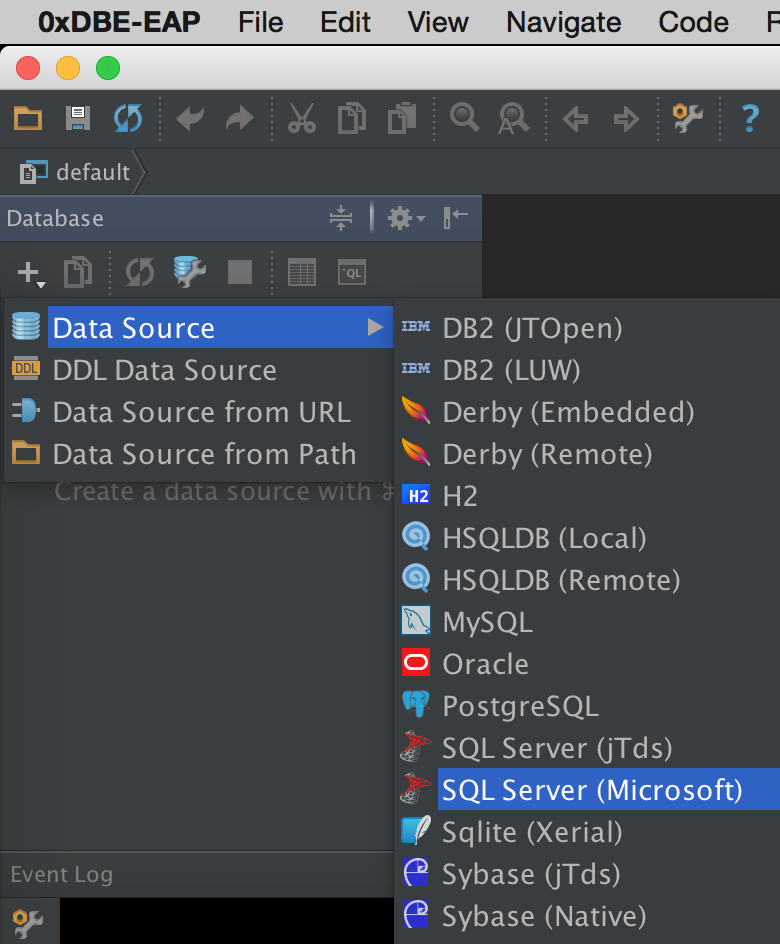Azure SQL Database: 0xDBE Database IDE on Mac OS X
Previously, we looked at querying Azure SQL Database from a command line tool on Mac OS X [Azure SQL Database: CLI on Mac OS X]. While CLI is a great tool for administration and basic data exploration, sometimes it is nicer to have a fully featured graphical IDE for more complex or data intensive tasks. There are a handful of UI tools that can act as a surrogate for SQL Server Management Studio on Mac OS X [comparison]. One of the tools that stands out above the rest is codename "0xDBE" from JetBrains (also makers of Intellij, PyCharm, and ReSharper to name a few).
Because the JetBrains folks do such a nice job of explaining the features and utility of 0xDBE on their website, the focus of this blog entry will be connecting to and querying Azure SQL Database once you have 0xDBE installed.
If you want to keep up to date with Azure SQL Database, follow us on Twitter (@AzureSQLDB). If you have questions, please ask us on [Stack Overflow] or [MSDN].
Prerequisites:
- Access to an Azure SQL Database [link]
To connect Azure SQL Database, in the "Database" view, click the "+", "Data Source" and then "SQL Server (Microsoft)".
You will be prompted with the following screen to describe your database connection. In the dropdown box next to the "URL" field, ensure that "default" is selected. Enter in the appropriate information for your database and click "Test Connection". If everything is correct (and your Azure SQL Database firewall rules are set to allow access from your machine), 0xDBE will tell you that the connection is successful. Click "Ok" at the bottom of the window.
You can now query your database. Enter a query in the "Azure SQL Database Connection.sql" window and click ">". The results will be displayed in the output tab below.
You have now connected and queried your Azure SQL Database with 0xDBE on your Mac (or Linux machine). If you are familiar with SQL Server Management Studio, one of the immediate stylistic differences that you will notice when exploring your database with the object explorer (tree view of the database objects) is that 0xDBE organizes a database's objects by the schema, not by the tables. The default schema for a database is "dbo", unless specifically specified. Thus, your tables can be found under "dbo" as shown above.


